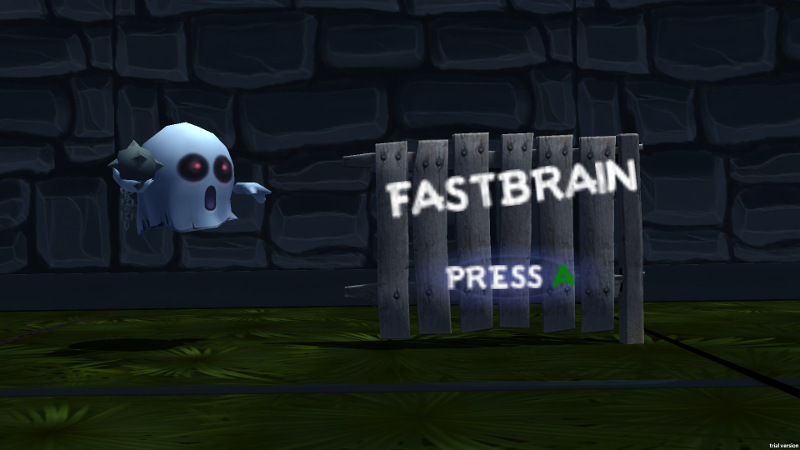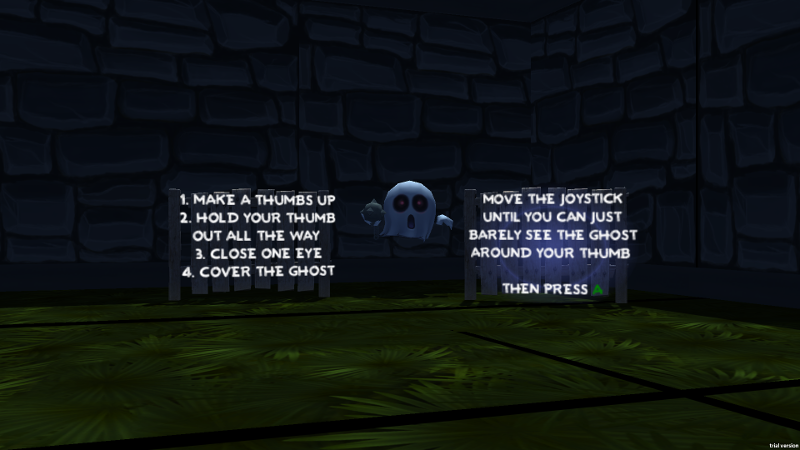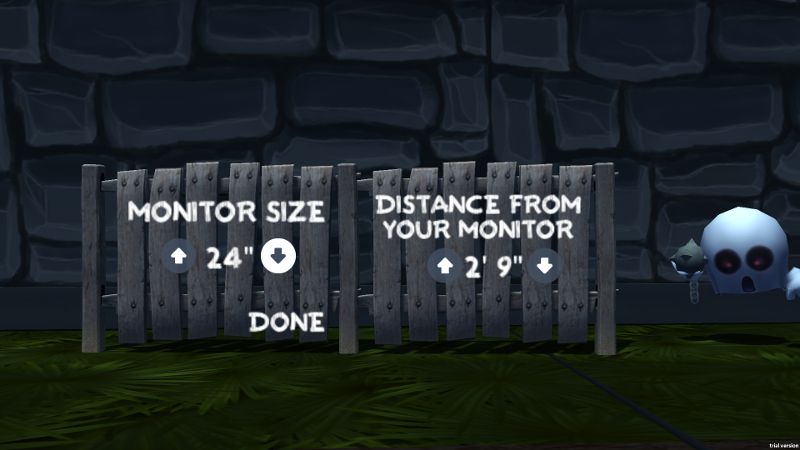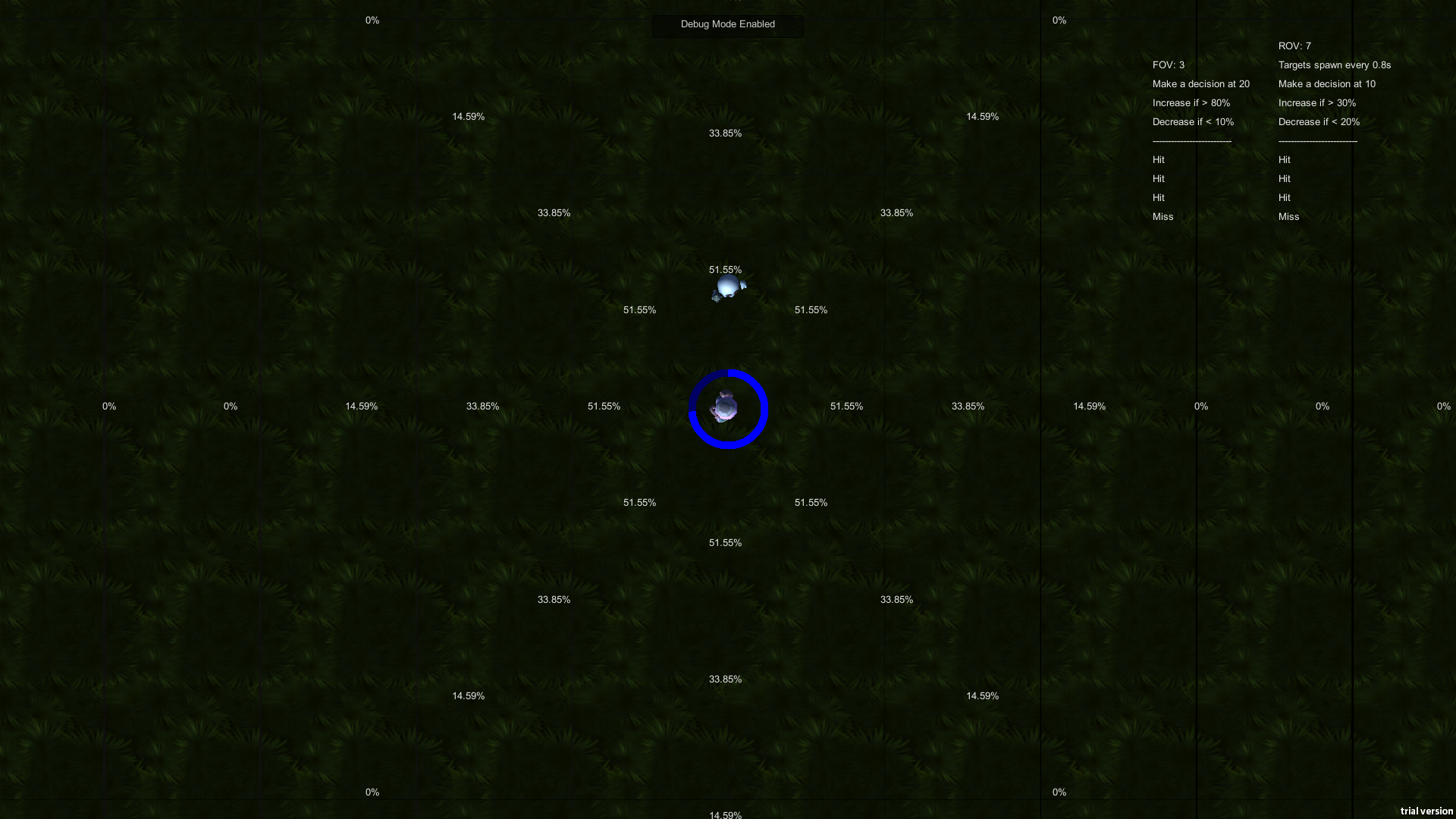Fastbrain
With Funomena / MIND Institute
Under active development since May 2014
 </a>
</a>
What platform is it on? Can I play?
Fastbrain works on PC and Mac computers, as long as you have a gamepad controller (like a Playstation controller). It’s still being tested, but you might be able to play it in the future!
What’s it for? Who’s it for?
Fastbrain is built to help people with “spatiotemporal cognitive impairments”, which make it hard for people to distinguish differences in size, quantity, and duration. People with Turner syndrome, 22q11.2 deletion syndrome, and fragile X syndrome typically have spatiotemporal impairments. I developed the Fastbrain prototype with Tony Simon of the MIND Institute at UC Davis, who is using it to help treat children with 22q11.2 deletion syndrome.

How do I play?
The Fastbrain prototype features one level, in which players need to zap ghosts as they appear around a central point. Each ghost you zap is worth 50 points, and zapping multiple ghosts in a row earns you multipliers. However, ghosts appear faster and further away from the center of the screen as time goes on, which tests and stretches your ability to identify things at wider visual angles. A single round of the game lasts between 5 and 7 minutes.
The final version of the game will incorporate that challenge into a linear narrative along with other minigames designed to improve players’ spatiotemporal cognition.
Who else worked on the game?
Tony Simon, a neuroscientist at the MIND Institute at UC Davis contracted the development of the game to Funomena. He and I worked very closely through each stage of development to make sure the game provided maximum benefit to its players. Other than that, this was a solo project.

What did you do?
Quite a bit! As the sole developer, I designed, coded, and sourced all the art for the prototype.
When he first came to Funomena with the idea for Fastbrain, Tony brought a small Flash prototype which demonstrated the basic treatment element (the targets appearing in circles) with no interactivity. My first project was to help Tony determine the best input method for the game. I built 9 different versions of his treatment program, each with completely different modes of input, trying to find a method that involved minimal cognitive overhead.
Much of the development of Fastbrain involved a similar process of rapid prototyping and feedback. As both the client and the resident expert in cognition, Tony’s input was invaluable in creating Fastbrain, and I sought it weekly. During the first months of development, I gave Tony roughly 5 prototypes each week for his evaluation. We made many of the design decisions about the game this way.
One of my favorite challenges about the design of the game involved calibration. The original design of the therapy required the targets to appear in concentric rings that were two degrees of visual angle in width. Visual angle is a measure of what amount of your vision something takes up. If you know how large something is, and how far away from you it is, visual angle is fairly easy to calculate. However, there weren’t many assumptions I could make about how large the player’s screen was or where it was relative to the player. I borrowed my solution from amateur astronomers. When held at arms length, the average person’s thumb encompasses about 2 degrees of visual angle, which can be very useful when trying to figure out what latitude a star is at in the night sky. In Fastbrain, I allowed players to manually input their screen size and their distance from it, but I also allowed them to calibrate it by resizing a target until it was the size of their thumb held at arms length!

What happened to the game?
Since finishing the prototype, Tony and I have presented a poster about it at the Entertainment Software and Cognitive Neurotherapeutics Conference (ESCoNS). We hope to present again at the 2016 Neurogaming conference.
The Fastbrain prototype is undergoing its first efficacy study right now. Tony plans to bring it to market someday if the study is successful.

Let me know what you think of this article on twitter @tedw4rd or leave a comment below!